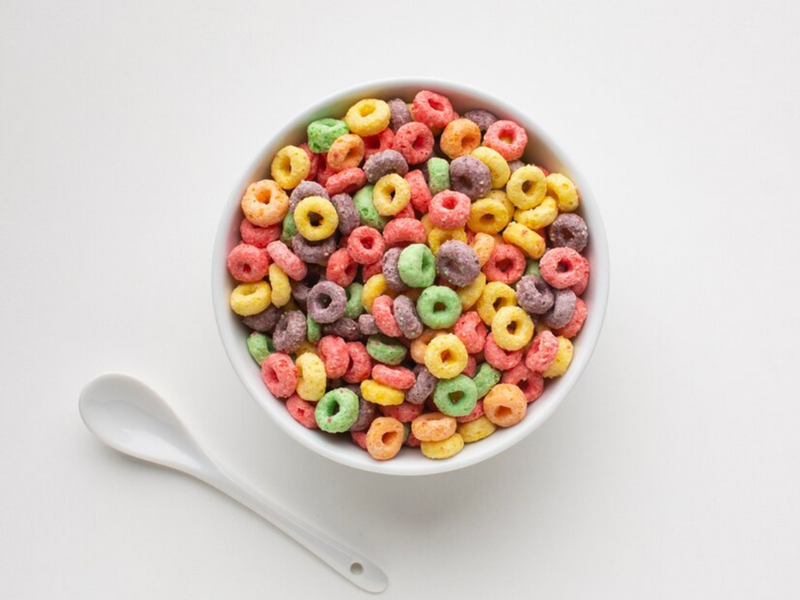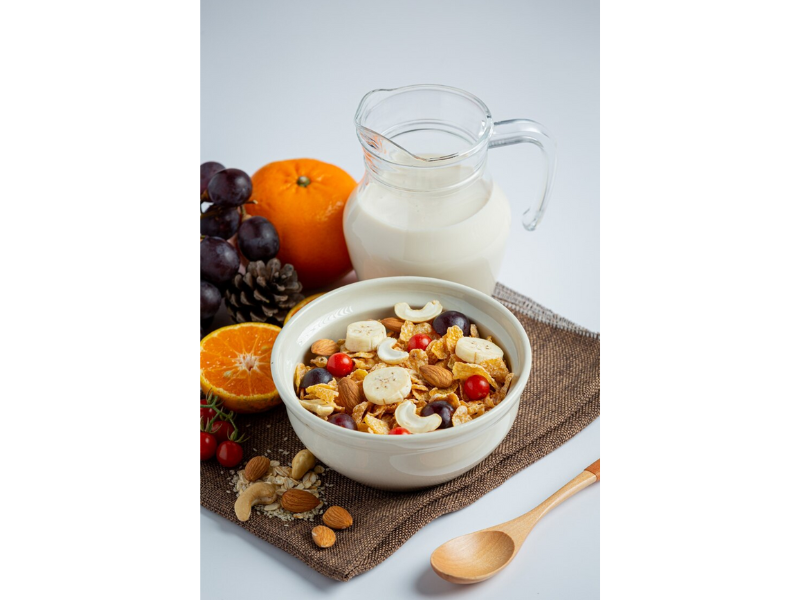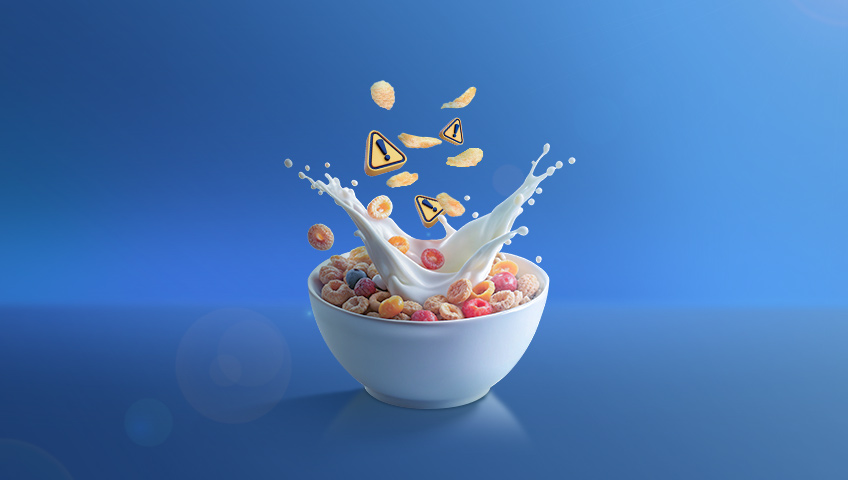2025.12.09
In the mid-19th century, James Caleb Jackson, a physician who recognized the importance of a healthy diet as an effective way to improve the physical and mental condition of patients, played a key role in the development of the first breakfast cereal. As the owner and director of a sanatorium in America, he strongly emphasized diets based on whole grains and natural foods. Jackson believed that many diseases, especially digestive and physical problems, were caused by the consumption of heavy and unhealthy foods such as meat and saturated fats. He was one of the first people to emphasize the importance of high fiber intake and simple, low-fat diets. Jackson believed that simple foods, without spices and fat, are not only beneficial for physical health but also help to cleanse the mind and reduce physical problems.
In 1863, Jackson invented the first example of modern breakfast cereal called "Granula." This food was made from Graham flour (a type of whole wheat flour that includes bran, germ, and endosperm). He chose this name because of the use of Graham flour and by adding the suffix "-ula," he created a distinctive name for this product. The production process of Granula involved mixing Graham flour with water and then drying it into a hard dough. The result of this process was heavy and hard pieces that needed to be soaked in milk or water for a long time before consumption.
Although Granula was nutritionally rich and high in fiber, it failed to gain popularity among the general public due to its hard texture and bland taste. However, Jackson continued to offer it to the patients of his sanatorium because he believed that this diet helped cleanse the body and promote overall health. Although Granula, as the first breakfast cereal, did not gain widespread popularity, Jackson's idea of using grains as a healthy meal paved the way for a major revolution in the breakfast food industry, and after that, people like John Harvey Kellogg were inspired by this idea and, by modifying Jackson's recipe, produced new products.
John Harvey Kellogg, an American physician and director of the famous Battle Creek Sanitarium in the United States, who was deeply religious, like James Caleb Jackson, believed that physical and mental health are closely related to diet. Kellogg emphasized the use of simple, unspiced, and low-fat foods, that is, foods made from whole grains, vegetables, and foods rich in fiber. He believed that such a diet helps to cleanse the mind and body and prevents moral and physical problems.
In the late 19th century, Kellogg decided to offer a healthy and simple food to his sanatorium patients as a light alternative to the heavy and fatty breakfasts of the time, which included fried eggs, bacon, sausage, and toast with butter. One day, by chance, the wheat dough used to prepare a light breakfast was left in the kitchen and dried as a result. The next day, William Kellogg, John Harvey Kellogg's brother, found this dried dough and instead of throwing it away, decided to flatten the dried dough with a device and then turn it into thin sheets. The result of this work was the production of thin and crispy pieces that were called "flakes" due to their appearance, and thus the first samples of flaked cereals were created.
After this discovery, William decided to use corn instead of wheat because corn tasted better and made the final product crispier and more attractive. For this reason, this cereal was named Corn Flakes, where Corn means corn and Flakes means thin and brittle sheets (flakes). This change was successful, and Corn Flakes were more popular than the early samples of wheat flakes.
William Kellogg, John Harvey Kellogg's younger brother, had a commercial view of Corn Flakes. He believed that to attract more consumers and commercial success of this product, its taste should be improved. William believed that adding sugar to Corn Flakes would improve its taste and lead to a wider market for this type of breakfast. This decision by William to add sugar caused a dispute between him and his brother. John Harvey Kellogg, due to his religious beliefs, strongly opposed adding sugar to Corn Flakes. He believed that sugar can exacerbate moral problems and insisted that Corn Flakes should be produced as a healthy and simple food for patients. Finally, after these disagreements, William decided to continue his path independently. He founded his company in 1906 and marketed Corn Flakes with added sugar. Although the original Corn Flakes had become somewhat popular due to the use of corn, it was after the addition of sugar that this breakfast cereal quickly gained widespread popularity among the general public.

At that time, the phrase "Breakfast cereal as part of a balanced breakfast" was written on breakfast cereal packages. This message meant that cereals alone are not enough and should be consumed alongside other nutrients such as proteins, fruits, and dairy to provide a complete and balanced breakfast, but many consumers only paid attention to the "balanced" part and thought that Consuming cereals alone is enough for a healthy breakfast. This incorrect view and extensive advertising caused breakfast cereals to become one of the common options in the daily diet.
Even today, breakfast cereal has become one of the main and most consumed food products in the world. With the increasing diversity of brands and increasing consumption, this industry is constantly growing. The average per capita consumption of breakfast cereals in 2024 was approximately 7.1 kilograms per person, and this statistic shows the high popularity of these products among consumers.
Ingredients and Nutritional Value of Breakfast Cereals
Breakfast cereals are usually consumed as the first meal; they are made from cereal grains such as corn, wheat, rice, barley, etc. Some of them are ready to eat, such as corn flakes, and are consumed cold, and some of them need a little heat (according to their preparation method), such as some oatmeals.
Usually, the grains used in the preparation of these products are of the refined type, such as rice flour, wheat flour, etc. In the processing of refined grains, parts of the grain, such as bran and germ, which contain fiber, vitamins, and minerals, are removed, and only the starchy part, which is carbohydrates, remains. Refined grains do not have nutritional value due to the removal of fiber and vitamins. In some cases, vitamins and minerals are added to this product to increase the nutritional value of breakfast cereals.
Flavorings, especially sugar, are another main ingredient in most breakfast cereals. In the ingredients section, added sugar may be written under different names, such as corn syrup or words ending in "-ose," such as fructose, sucrose, and maltose.
Therefore, carbohydrates and sugar are the main ingredients of most breakfast cereals. According to the standard, 35% of the product's weight can be added sugar, meaning that in 30 grams of breakfast cereal (approximately the size of a small bowl for one breakfast serving), there are approximately 10 grams of sugar (about two teaspoons of sugar). In addition, carbohydrates are also broken down and converted into sugar after entering the body. This high amount of sugar leads to a rapid increase in blood sugar after consuming breakfast cereal, and then the blood sugar suddenly decreases. It can be said that breakfast cereals have a high glycemic index (GI), meaning that they cause severe fluctuations in blood sugar, which in the long term can lead to type 2 diabetes. Also, continuous consumption of products that are high in sugar is associated with problems such as inflammation, fatty liver, weight gain, obesity, and an increased risk of heart disease, and these problems gradually damage a person's general health.

Breakfast cereals are high in calories due to their composition, and their digestion speed is also high, while their nutritional value is low. These factors cause a person to feel hungry shortly after consuming breakfast cereal and, as a result, consume more food, which leads to extra calorie intake. As a result, this cycle can lead to weight gain, obesity, and related problems, including heart disease, type 2 diabetes, and high blood pressure.
Managing Breakfast Cereal Consumption
Breakfast cereals are considered a popular and suitable option due to their quick preparation and easy consumption, especially for children and people who do not have enough time to prepare breakfast. However, these products are usually made from refined grains, which do not have high nutritional value due to the removal of fiber, vitamins, and minerals. Also, they contain significant amounts of sugar, which is harmful to health if consumed in excess.
Therefore, as mentioned on the packaging of these products, breakfast cereals cannot replace main meals and be considered as part of a fixed diet or permanent snack. This issue is especially important regarding the nutrition of children who are in their growing age, and for this reason, despite children's interest in this type of breakfast, it is recommended that parents encourage them to consume breakfasts such as eggs and lentils, which are rich in protein.
In general, the breakfast meal should not include high-calorie, sweet, and fatty foods that lack essential nutrients, and if you want to consume breakfast cereals at times, it is better to check the nutrition label and ingredients when buying and choose healthier types of this type of breakfast:
- Some of these products contain high amounts of sugar, and in the table on the food packaging that shows the amount of sugar, salt, fat, etc., their sugar content is usually marked in red. This color usually warns consumers that these products may be harmful to health due to their high sugar content. In contrast, there are other products that have more balanced sugar and are displayed in green in the nutritional value table. This color indicates that the product in question can be a better option for consumption. Therefore, it is better not to choose breakfast cereals whose sugar is marked in red in this table.
- Paying attention to the type of grain used in breakfast cereals is of particular importance. Breakfast cereals made from corn or rice flour are refined grains and lack fiber and essential minerals. This type of cereal often loses its nutrients due to excessive processing and cannot fully meet the body's nutritional needs. In contrast, breakfast cereals that are bran-based contain more fiber and nutrients and have a higher nutritional value, so it is better to choose breakfast cereals that have bran.

After choosing the right cereal, it is recommended to combine the cereal with more nutritious ingredients to increase the nutritional value of breakfast. For example, cereals can be combined with milk or yogurt, fresh or dried fruits, and nuts. These combinations not only give a better taste to breakfast but also help provide essential vitamins and minerals.


